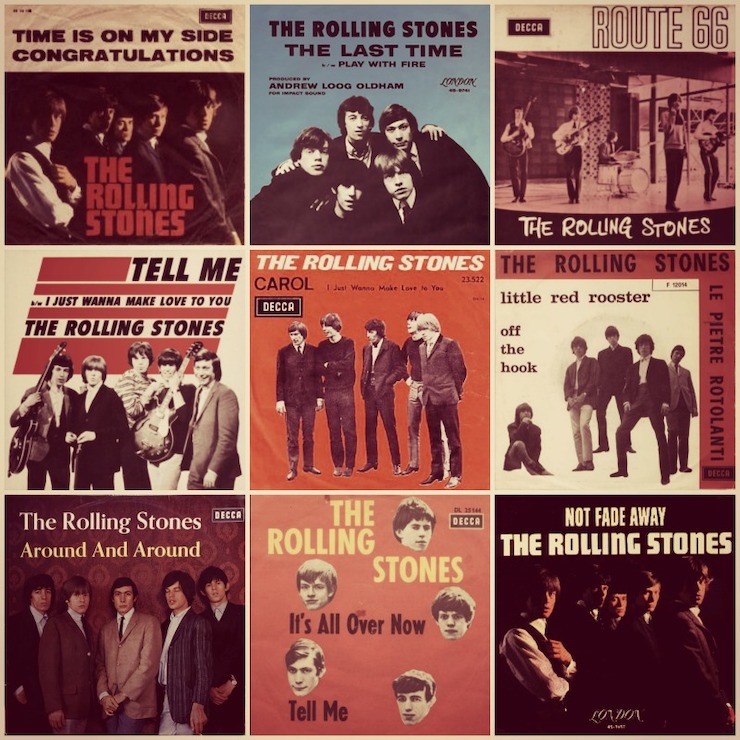
Here is my top 10 list of songs from this early period.
- Route 66
- Not Fade Away
- Little Red Rooster
- Time is On My Side
- Carol
- I Just Want To Make Love To You
- It´s All Over Now
- Around and Around
- I Wanna Be Your Man
- Tell Me
–
1. Route 66 (Bobby Troup)
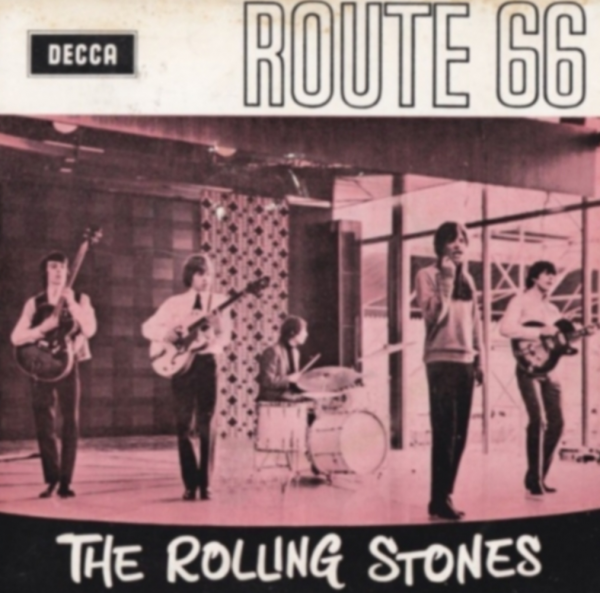
[vc_row][vc_column][vc_message message_box_color=”mulled_wine” icon_fontawesome=”fa fa-quote-left”]Route 66, written by the late Bobby Troup, gets the album [their first album] off to a rousing start, Keith Richards playing an excellent guitar with a tight clap-back track rhythm by Bill Wyman & Charlie Watts. It soon became a popular stage number.
-Martin Elliott (The Rolling Stones: Complete Recording Sessions 1962–2012)[/vc_message][/vc_column][/vc_row]
Recorded January 3, 1964 @ Regent Sound Studio, London, England.
–
2. Not Fade Away (Buddy Holly)
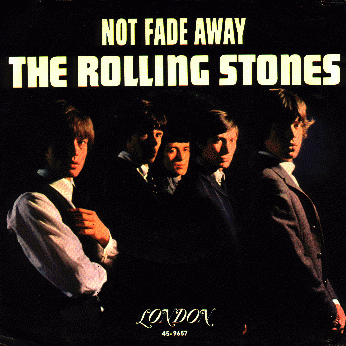
[vc_row][vc_column][vc_message message_box_color=”mulled_wine” icon_fontawesome=”fa fa-quote-left”]From the all-important opening bars the atmosphere was right and, within a breath-taking two minutes, the basis of the track was complete. ..The harp playing of Brian Jones is full of energy and Phil Spector´s “manic maracas” create an exciting rhythm track.
-Martin Elliott (The Rolling Stones: Complete Recording Sessions 1962–2012)
The Stones made this Buddy Holly standard sound demanding and desperate. “[We] put the Bo Diddley beat up front,” Wyman said. Andrew Loog Oldham went so far as to say it was “the first song Mick and Keith wrote. The way they arranged it was the beginning of their shaping of them as songwriters.”
Rollingstone.com[/vc_message][/vc_column][/vc_row]
“Not Fade Away”, with a strong Bo Diddley beat, was a major hit in Britain. It was the A-side of the band’s first US single.
Recorded 10, 28 January, 4 February 1964 Regent Sounds Studios, London, England.
I’m gonna tell you how it’s gonna be
You’re gonna give your love to me
I’m gonna love you night and day
Well love is love and not fade away
Well love is love and not fade away
–
TV Studio – June 1964:
–
3. Little Red Rooster (Willie Dixon)
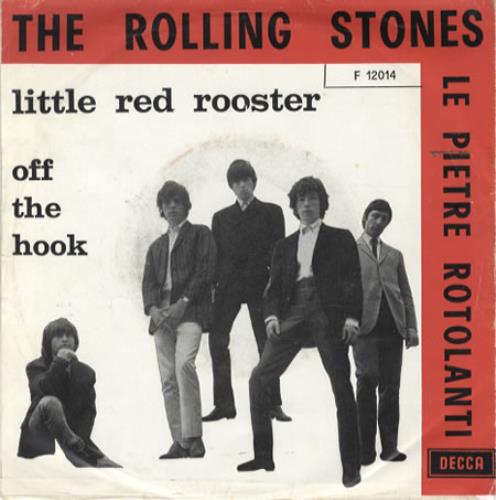
[vc_row][vc_column][vc_message message_box_color=”mulled_wine” icon_fontawesome=”fa fa-quote-left”]One of Jagger’s most potent early sex-god moments was manifest on this Howlin’ Wolf cover, which the band released as a U.K. single in November ’64 against all advice. “We wanted to make a statement,” said Richards, with a challenge to the label: “See if you can get that to the top of the charts, motherfucker.” Sure enough, it hit Number One. Foreshadowing events to come, it was cut without inviting Jones, who laid down his slithering slide part after the fact.
-rollingstone.com (top 100 Rolling Stones songs)[/vc_message][/vc_column][/vc_row]
Recorded 2-3 September 1964 Regent Sounds Studios, London, England.
(The track was recorded without him Brian Jones who later added his brilliant slide guitar & harmonica)
[vc_row][vc_column][vc_message message_box_color=”mulled_wine” icon_fontawesome=”fa fa-quote-left”]”it is his [Jones’] playing that makes the record via both the cawing bottleneck that is its most prominent feature and his closing harmonica”
-Sean Egan (Rough Guide to The Rolling stones)
“It was his [Jones’] masterpiece, his inspired guitar howling like a hound, barking like a dog, crowing like a rooster”
–Stephen Davis (Old Gods Almost Dead: The 40-Year Odyssey of the Rolling Stones)
“I believe ‘Rooster’ provided Brian Jones with one of his finest hours.
-Bill Wyman[/vc_message][/vc_column][/vc_row]
–
TV 1964:
–
4. Time is On My Side (Jerry Ragovoy)
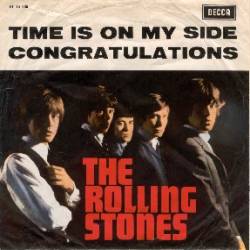
[vc_row][vc_column][vc_message message_box_color=”mulled_wine” icon_fontawesome=”fa fa-quote-left”]..sounds like a raw, drunken demo, but it is a sexy sort of sloppy.. [it] sidles up behind you at closing time, in an open-collard shirt, breathing nicotine and booze in your ear.
– Bill Janovitz (Rocks Off: 50 Tracks That Tell the Story of the Rolling Stones )[/vc_message][/vc_column][/vc_row]
The Rolling Stones recorded two versions of the song in 1964. The first version (a looser arrangement featuring a briefer, organ-only intro), recorded in London in June 1964, was released in the US in 1964, as a single from their album 12 X 5. The second version (more tightly arranged and featuring guitar in the intro), recorded in Chicago on November 8, 1964, was released in the UK on January 15, 1965 on The Rolling Stones No. 2.
Recorded November 8, 1964 Chess Studios, Chicago, USA.
[vc_row][vc_column][vc_message message_box_color=”mulled_wine” icon_fontawesome=”fa fa-quote-left”]Time is on my side, yes it is.
Time is on my side, yes it is.
Now you all were saying that you want to be free
But you’ll come runnin’ back (I said you would baby),
You’ll come runnin’ back (like I told you so many times before),
You’ll come runnin’ back to me[/vc_message][/vc_column][/vc_row]
–
Ed Sullivan Show – October, 1964:
–
5. Carol (Chuck Berry)
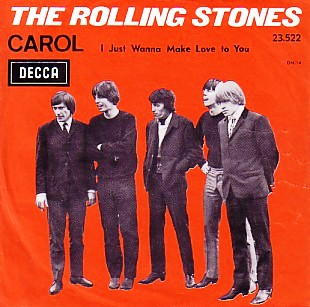
[vc_row][vc_column][vc_message message_box_color=”mulled_wine” icon_fontawesome=”fa fa-quote-left”]..it was fantastic when they started doing the Chuck Berry stuff. They did Carol and it sounds as raw as fuck, they where really spitting it out. The whole vibe of it was just great. Carol was the sort of thing we´d been listening to for a number of years, and all of a sudden there´s a band of guys doing it in your living room. Amazing.
– Jimmy Page (MOJO – Top 50 Rolling Stones songs)[/vc_message][/vc_column][/vc_row]
Recorded @ Regent Sounds Studios, London, England – 3 January 1964.
[vc_row][vc_column][vc_message message_box_color=”mulled_wine” icon_fontawesome=”fa fa-quote-left”]Oh, Carol
Don’t let him steal your heart away
I’m gonna learn to dance
If it takes me all night and day[/vc_message][/vc_column][/vc_row]
–
TV Show 1964:
–
6. I Just Want To Make Love To You (Willie Dixon)
[vc_row][vc_column][vc_message message_box_color=”mulled_wine” icon_fontawesome=”fa fa-quote-left”]..”I Just Want to Make Love to You,” a highlight of their 1964 debut album. The group takes the song at a breakneck pace, built around repeated crackling downward guitar licks and wailing, chugging harmonica. Whereas Muddy Waters sang the song as if he was worming his way into his woman’s favors with sly, cocky charm, Jagger had a take-no-prisoners assault, halting only briefly for breath near the end of the verses, when the band briefly crashed through stop-starts as the title phrase was delivered. The tempo accelerated yet more for the bridge, where the band seemed like a train threatening to derail from sheer speed, again coming to a climax on a couple of brief stop-starts before launching back into the verse. The sense of untamed wildness became overwhelming again on the instrumental break, where the harmonica built up to a frenzy before those stop-starts served as the lynchpin of a devastatingly authoritative blues-rock guitar lick.
-Richie Unterberger (allmusic.com)[/vc_message][/vc_column][/vc_row]
Recorded 28 January, 24-25 February 1964 Regent Sounds Studios, London, England.
[vc_row][vc_column][vc_message message_box_color=”mulled_wine” icon_fontawesome=”fa fa-quote-left”]I don’t want you be no slave
I don’t want you work all day
I don’t want ’cause I’m sad and blue
I just want to make love to you, baby[/vc_message][/vc_column][/vc_row]
–
–
7. It´s All Over Now (Bobby Womack and Shirley Womack)
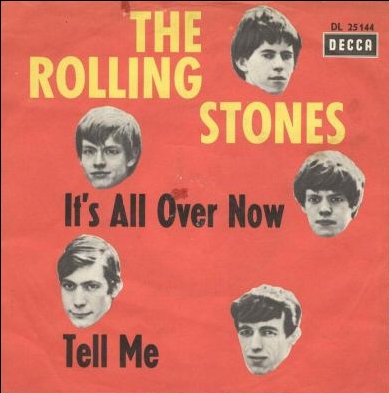
[vc_row][vc_column][vc_message message_box_color=”mulled_wine” icon_fontawesome=”fa fa-quote-left”]The Beatles´ stuff was easy vocal harmonies, neat and precise. That wasn´t too difficult, but to try and get that dirty sound we were after, it was just the most obvious place in the world to record it at Chess.
-Keith Richards (about going to Chess)
“It´s All Over Now” is a landmark in the Stones´ recording history and is typical of the creative influence of the Chess Studios.
-Martin Elliott (The Rolling Stones: Complete Recording Sessions 1962–2012)[/vc_message][/vc_column][/vc_row]
Written by Bobby Womack and Shirley Womack. It was first released by The Valentinos featuring Bobby Womack. The Valentinos version entered the Billboard Hot 100 on June 27, 1964, where it stayed on the chart for two weeks, peaking at number 94. The Rolling Stones had their first number-one hit with this song in July 1964.
Recorded 10 June 1964, Chess Studio, Chicago
[vc_row][vc_column][vc_message message_box_color=”mulled_wine” icon_fontawesome=”fa fa-quote-left”]Well, baby used to stay out all night long
She made me cry, she done me wrong
She hurt my eyes open, that’s no lie
Tables turn and now her turn to cry
Because I used to love her, but it’s all over now
Because I used to love her, but it’s all over now[/vc_message][/vc_column][/vc_row]
–
T A M I Show, 1964:
–
8. Around And Around (Chuck Berry)
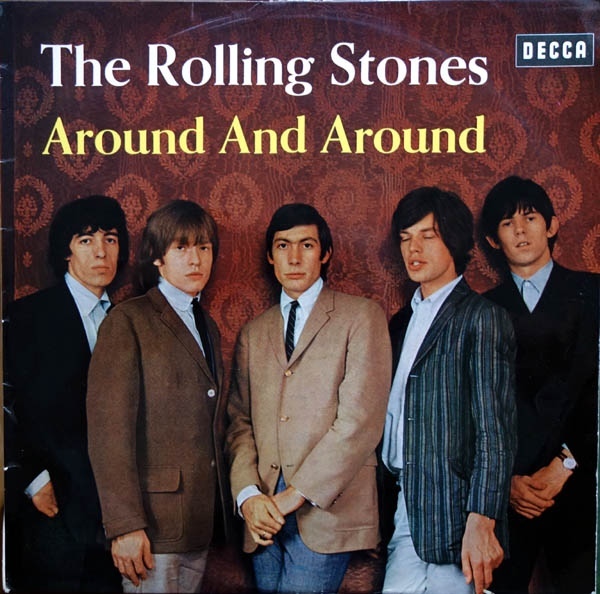
[vc_row][vc_column][vc_message message_box_color=”mulled_wine” icon_fontawesome=”fa fa-quote-left”]..this version is nothing short of immaculate. Keith Richards, whose guitar playing is excellent, leads the song, rocking and rolling in a manner that would inspire “greased duck´s quiff” and helps create an EP whose achievements hva long since been copied but not emulated.
-Martin Elliott (The Rolling Stones: Complete Recording Sessions 1962–2012)[/vc_message][/vc_column][/vc_row]
Recorded 11 June 1964 Chess Studios, Chicago, USA.
[vc_row][vc_column][vc_message message_box_color=”mulled_wine” icon_fontawesome=”fa fa-quote-left”]I said the joint was rocking
Going round and round
Yeah, reeling and a rocking
What a crazy sound[/vc_message][/vc_column][/vc_row]
–
–
9. I Wanna Be Your Man (Lennon–McCartney)
[vc_row][vc_column][vc_message message_box_color=”mulled_wine” icon_fontawesome=”fa fa-quote-left”]..What hit home was not as much the drawling defiance of Jagger´s lead vocal, as the cutting blade of a guitar solo that might have been lifted from a Howlin´Wolf session at Chess. Deliberately sloppy and murky, their production sounded untutored and spontaneous, an impression belied only by the painstakingly multi-dubbed vocals of Jagger and Richards. In just 100 seconds, The Rolling Stones established themselves as the gang-leaders of British blues, teenage hoodlums to The Beatles´ moptop choirboys.
-Pete Doggett (MOJO Magazine – 50 Greatest Stones Tracks)[/vc_message][/vc_column][/vc_row]
Recorded 7 October 1963 De Lane Lea Studios, Kingsway, London, England.
[vc_row][vc_column][vc_message message_box_color=”mulled_wine” icon_fontawesome=”fa fa-quote-left”]I wanna be your lover, baby,
I wanna be your man
I wanna be your lover, baby
I wanna be your man[/vc_message][/vc_column][/vc_row]
–
–
10. Tell Me (Jagger/Richards)

[vc_row][vc_column][vc_message message_box_color=”mulled_wine” icon_fontawesome=”fa fa-quote-left”]Rather, they produced this sort of dark, acoustic-based folk/pop. Oldham attempted to influence the band more toward the fashionable pop styles of the day, while the band did their best to keep true to their self-image as an R&B band, with Brian in particular remaining a blues purist. With “Tell Me,” Oldham´s influence won out.
– Bill Janovitz (Rocks Off: 50 Tracks That Tell the Story of the Rolling Stones)[/vc_message][/vc_column][/vc_row]
Featured on their 1964 self-titled album (later referred to as England’s Newest Hit Makers in the US). It was later released as single A-side in the US only, becoming the first Jagger/Richards song that the band released as a single A-side, and their first record to enter the US Top 40. The single reached #24 in the US and #1 in Sweden. It was not released as a single in the UK.
Recorded 28 January, 24-25 February 1964 Regent Sounds Studios, London, England.
[vc_row][vc_column][vc_message message_box_color=”mulled_wine” icon_fontawesome=”fa fa-quote-left”] want you back again
I want your love again
I know you find it hard to reason with me
But this time it’s different, darling you’ll see
You gotta tell me you’re coming back to me
You gotta tell me you’re coming back to me
You gotta tell me you’re coming back to me[/vc_message][/vc_column][/vc_row]
–
Spotify Playlist
[vc_row][vc_column][vc_separator][vc_btn title=”Borntolisten @ Facebook” color=”blue” i_icon_fontawesome=”fa fa-facebook-official” add_icon=”true” link=”url:https%3A%2F%2Fwww.facebook.com%2FJohannasVisions%2F||target:%20_blank|”][/vc_column][/vc_row][vc_row][vc_column][vc_message message_box_style=”outline” icon_fontawesome=”fa fa-link” css_animation=”bounceIn”]Check out:
[/vc_message][/vc_column][/vc_row]
Sources:
- Wikipedia
- The Rolling Stones: Complete Recording Sessions 1962–2012 – Martin Elliott
- The Rolling Stones All the Songs: The Story Behind Every Track –
- Rocks Off: 50 Tracks That Tell the Story of the Rolling Stones – Bill Janovitz
- Uncut Magazine – The Ultimate Music Guide – The Rolling Stones
- MOJO Magazine – The 50 Greatest Stones Tracks
- Allmusic.com
One thought on “10 Best Rolling Stones Songs from 1963/64 (videos & spotify playlist)”